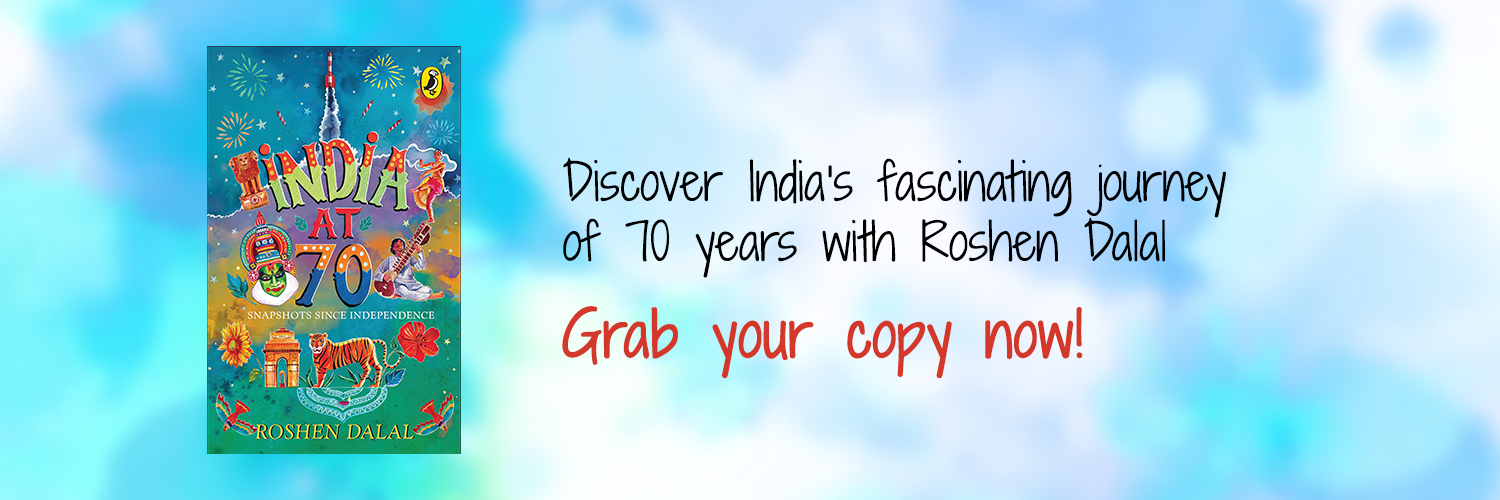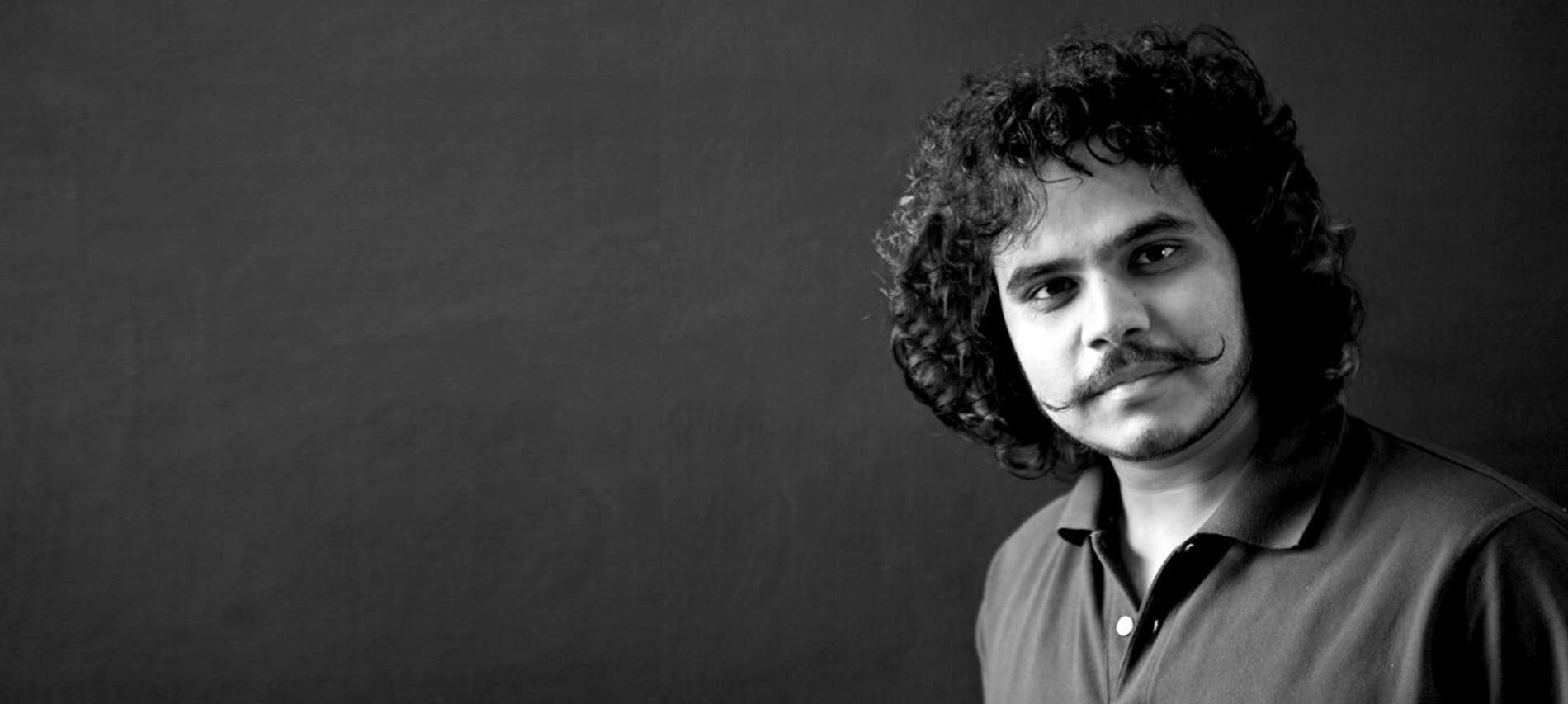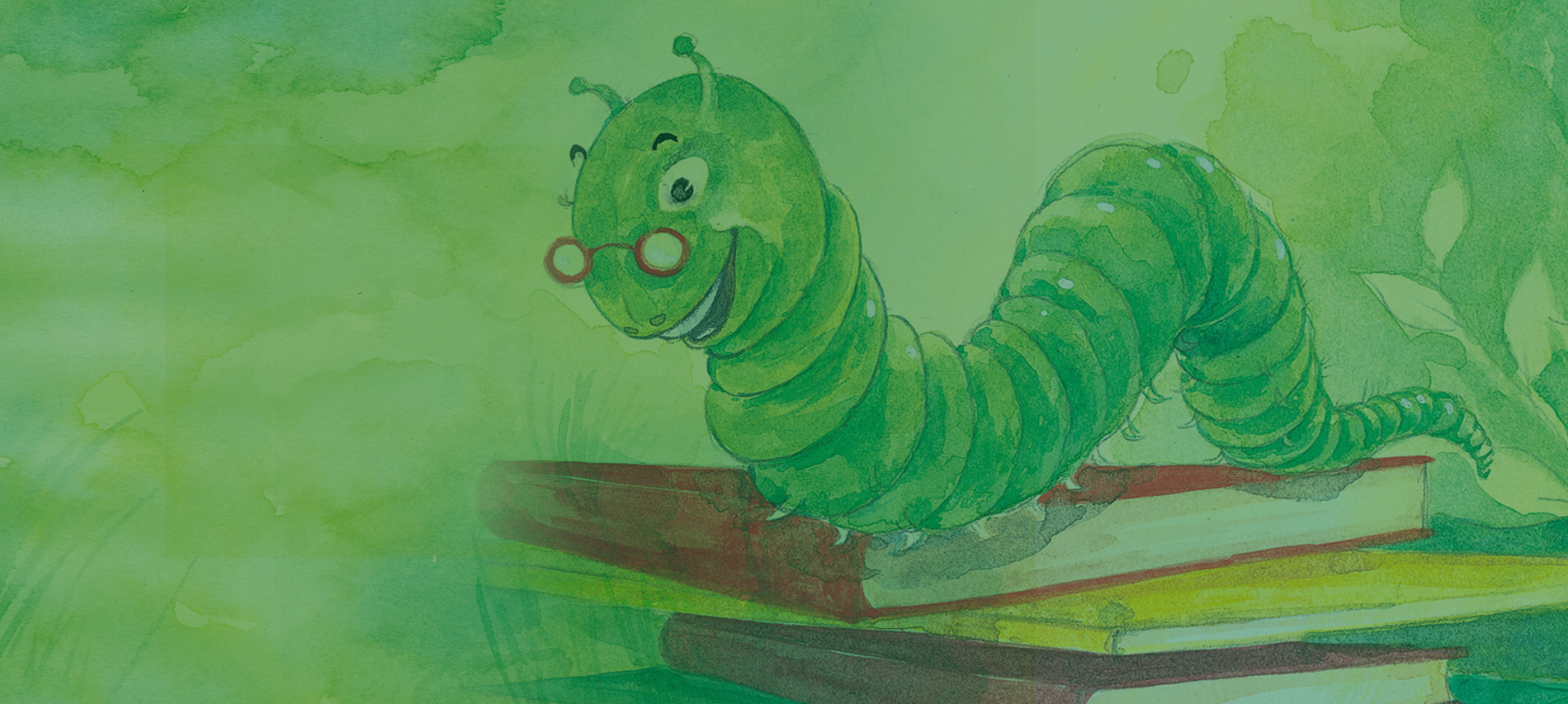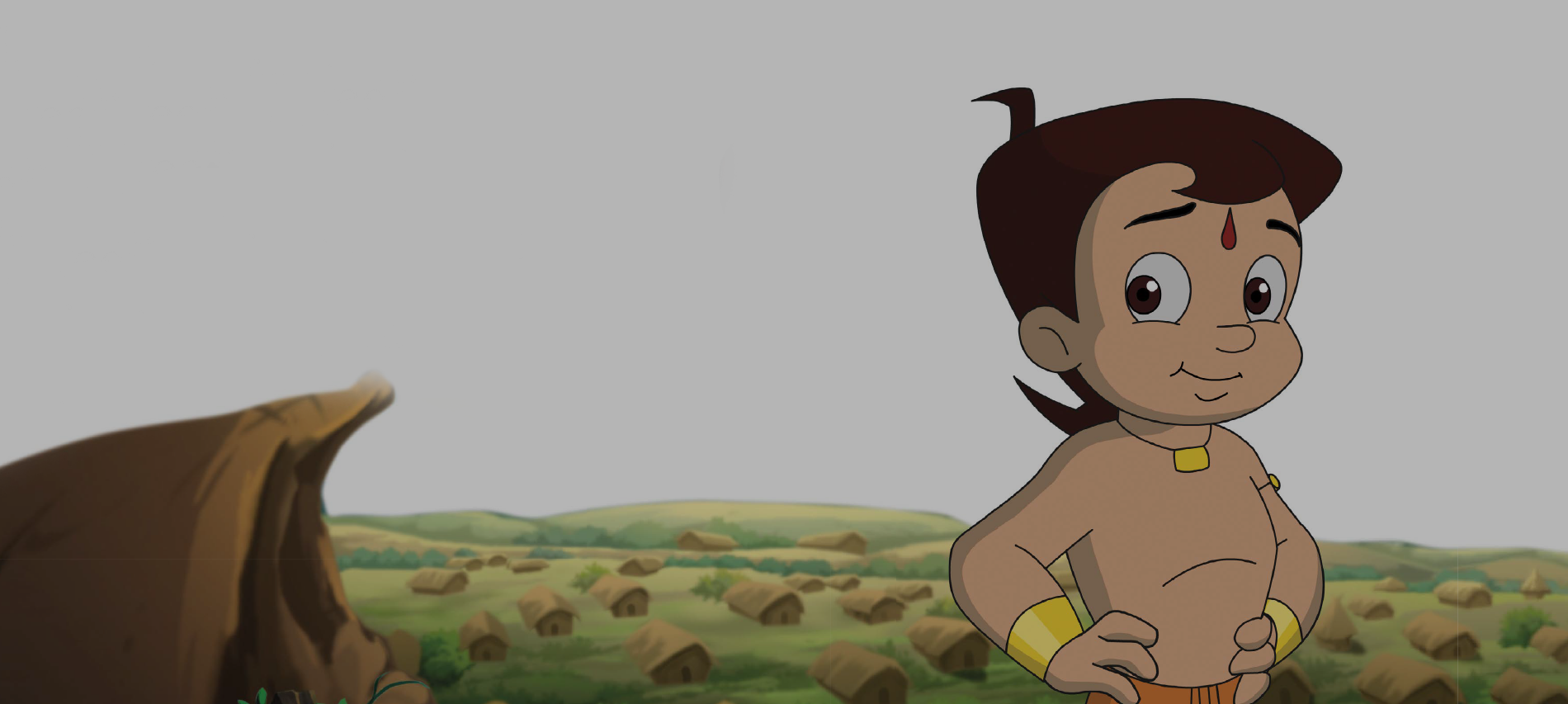Covering movies from 28 Days Later to Ex Machina, Rick Edwards and Dr Michael Brooks take the readers on a joyous ride through astrophysics, neuroscience, psychology, botany, artificial intelligence, evolution, and plenty more subjects that are invoked by your favourite movies.
Here are six facts that will blow your mind:
The Martian

Jurassic Park

Interstellar

Back to the Future

Planet of the Apes

Interstellar

Fascinating, isn’t it?

Category: Specials
Who is Chatur Chanakya and Why Should Children Meet Him? Radhakrishnan Pillai Answers
From Corporate Chanakya to Chatur Chanakya, what inspired this transition in writing for a different audience?
It was a new dimension for me. Even though the common connect between Corporate Chanakya and Chatur Chanakya is the same – Chanakya, it is very differently presented. Corporate Chanakya was meant as a management book especially for those who are in management and leadership positions. The audience was educated and already decision makers. While Chatur Chanakya was a different aspect. Reaching out to children who are 10 years old. The challenge was to make the profound knowledge of Chanakya from the Arthashastra, to be presented in a simple format. When the puffin team approached me with this concept to write for kids, it was a challenge. But I got inspired to try a new way of writing. And thanks – the book has really come out well. Much better than what was expected.
Is the character of young Chatur inspired by anyone from your life?
Yes and No. Chatur Chanakya is an imaginary character. Just like Superman, Batman and Chota Bheem. These characters are imaginary but have a message to give to kids. Through Chatur Chanakya we are going to bring out the best of wisdom of Chanakya (who lived nearly 2400 years ago) and his Kautilya’s Arthashastra. He was a leadership guru and a king maker. Chatur Chanakya will teach children how to think and become a leader. The other children in the book are inspired by real children. Arjun is the name of my son, who is the friend of Chatur Chanakya. Lakshmi is inspired by my daughter (her real name is Aanvikshiki). While Datta, Aditya and Milee are their friends. All of them become part of the book.
What is so special about Chatur and why should children befriend him?
Though a comic character. He is very real. Because he is a school going kid like any child of our generation. He has all the challenges that is faced by kids today. Be it bullying in schools, exam fever, being compared to other kids (even parents do that). So any one can associate with Chatur Chanakya. He is cute and nice. But he is also a fiend, philosopher and guide to his other classmates and friends. He is your friendly neighbour and ‘best friend’. He has got a choti on his head and a trick up his sleeve. You will love him. Not only children, but parents, grandparents and even teachers in schools will love Chatur Chanakya. He is what everyone wants in an ideal child – Intelligent and dynamic.
Tell us that one thing in Chatur Chanakya and the Himalayan Problem that one should look out for.
How to think out of the box. Chatur Chanakya faces a huge problem. Himalaya is a class mate of his, who is huge and bullies everyone. While Chatur Chanakya is not physically as strong Himalaya, he uses his intelligence to defeat Himalaya. So through this book we are giving a message to children, teachers and parents that – If you are mentally strong you can defeat any Himalayan (huge) problem.
Revisit school and relive all the memories with your little one in Radhakrishnan Pillai’s Chatur Chanakya and the Himalayan Problem!

How Did the Don Become the Master Baker?
Raja Sen’s The Best Baker in the World opens up the world of cult (and sometimes controversial) films to children and their parents, as Sen’s tribute to Francis Ford Coppola’s The Godfather, comes visually alive with the stunning illustrations done by Vishal K. Bharadwaj. But what is the secret recipe that went into the making of this amazing, one-of-a-kind book?
Raja Sen and Vishal Bharadwaj spill the beans!
Where did the thought of adapting a cult-film into a book for children come from?
Raja: Great stories transcend boundaries. Children routinely read adaptations of classic novels and Shakespeare plays, and I strongly believe cinematic masterpieces are as fundamentally strong as those texts. I thought it would be fascinating to see if a mature, R-rated film can retain its narrative appeal without the ‘adult’ elements — the blood and violence and sex — and if we could still pay tribute to the iconic and memorable aspects of the original film. The characters, the moments, the drama, all of that still remains even if the stakes aren’t fundamentally tied to violence and war. The thing we must remember is that if told right, the popping of a water balloon can feel as momentous in a story as the assassination of a character.
Vishal: When Raja approached me to illustrate the project, two things were set in stone: that these would be ‘adult’ films i.e. ones that only they should watch, as opposed to all-ages classics or PG-13 level movies that a child might be exposed to with the right guidance; and second, that we wouldn’t do a shot-for-shot, beat-by-beat representation of the films. This transformative quality is what really intrigued me about the project.
Why a baker, and not any other profession, for your protagonist who happened to be the head of a mafia in the original?
Raja: More than anything, The Godfather is a film about family — a family business, if you will. It is also a specifically Italian family film, which means food features heavily. Thus I wanted to adapt it around a family business about food, and a bakery seemed both appropriate for the task and appropriately inviting for a children’s setting. As a bonus, my illustrator Vishal Bhardwaj loves cooking and photographing food, and I knew he’d draw mouthwatering pastry.
Vishal: Fairly early on I asked Raja if we could concentrate the setting of the book down to a single street or neighbourhood (the movie takes place across multiple countries and cities), since we were telling an intimate story of families. The term ‘godfather’ denotes a certain protector status, someone you turn to for guidance & comfort. So we thought of similar pillars of a community, the kind who would always be there for you and make you feel better. Also, since I have a penchant for food, a bakery, with all its warmth and the aromas of its fresh baked goods filling the neighbourhood, was the perfect fit.
How difficult was it to dress up The Godfather as a bird who’s a baker?
Vishal: The process took a couple of weeks to go from Brando to bird. Plenty of exploratory sketches, starting with straight renditions of Brando himself, then trying on different animal ‘skins.’ During the research phase I read that Brando thought of Don Corleone as an old bulldog, so he added in the now-famous jowly look to the character. A bulldog version of our Don was tried, but he didn’t vibe with our baker’s character. Finally, after hogs & lions and other beasts, he took the form of a bird, a wise owl. There was the right gentleness to him now, but when Raja saw me draw his wings as delicate arms that manipulated pastry, he asked me to change them to more formidable, warmly enveloping wings almost as huge as the rest of him, and the physical character was complete.
As far as actually dressing him, we moved away from the iconic tuxedo. He is a baker after all, so an apron was appropriate, and rolled up sleeves with a bowtie (he’s still dapper, not sloppy!). I put in a subtle nod to a contemporary chef I like, Mario Batali, who is known for wearing shorts and Crocs sandals under his apron. But because our Don is more old-school (and Raja, like myself, appreciates a good pun), did away with the Crocs and instead gave our big bird a pair of classic wing-tip brogues.
What are the other cinematic masterpieces being retold for children in this series?
Raja: We’re looking at taking on several mature, memorable films and recreating what made them special while setting them in an entirely different (and wholly innocent) world. Next up is a homage to Danny Boyle’s Trainspotting, a highly explicit and wild film about addiction, and one of my favourite films of the 90s. Others on the list include some of the most quotable films of all time, as well as a particularly scandalous one by Stanley Kubrick.
Vishal: I hadn’t seen The Godfather before saying yes to The Best Baker in the World (as it came to be called. For a long time we referred to it as ‘Project Cannoli’). The running joke of-late has been that whatever we end up doing, if it’s a film I haven’t seen before taking the adaptation on, we must be on the right track! Raja has dropped some intriguing names into the hat, from sprawling epic classics to mind-bending modern gems. I’m excited to visually interpret any of these.
Fascinating, isn’t it? Do you still need any more convincing to pick up this marvellous book not just for your little one, but yourself too!

Books Ruskin Bond Recommends for Your Little One
Our introduction to the world of books, when we were children, was through our elders who would gift us a novel on different occasions. But imagine having a list of books recommended to us specially by one of our favourite storytellers while we were growing up, fantastic right?
Well, a book is a book, and honestly, no one is ever too old to read ‘children’s book’, don’t you think?
So gear up for some amazing recommendations by the inimitable Ruskin Bond who wrote this very special introduction for ‘Puffin’s Good Reading Guide for Children’, and don’t forget to pass them onto your child!
Adventure with Books
The palaces, lawns and gardens of Jamnagar, where I spent the first six years of my life, were just the right setting for a child whose first book was Alice in Wonderland. Princes and princesses were all over the place, and if the King and Queen of Hearts had emerged from behind the rose bushes I would not have been at all surprised. In one of the old palaces lived a rather dotty old princess who was rather like the Duchess in Alice. When I grew up I put her into one of my stories, ‘The Room of Many Colours’, and several readers remarked that she had walked straight out of Wonderland. And indeed she had. Our first books have a strong and lasting influence on our thinking and the way we look at life.
From Wonderland I travelled to Never Never Land, for my second book was Barrie’s Peter Pan. Not the text of the play but the book written specially for children. I did read the play (along with all Barrie’s works) when I was at school; and later, a young man in London, I went to the old Scala theatre to see the annual Christmas production of Peter Pan. That great actor Donald Wolfit took the part of Captain Hook, with beautiful Margaret Lockwood as Peter. I had expected the theatre to be full of children, but the audience consisted largely of adults. Peter, the boy who never grew up, must have appealed to the eternal child in each of us. And when, in order to save Wendy’s life, he appeals to the audience to clap their hands if they believe in fairies, everyone clapped, this writer included.
I believed in fairies, I wish I could still believe in them.
Barrie was one of my favourite authors and playwrights. It is not easy to find his works today (apart from Peter Pan), but if you come across his other plays— Dear Brutus, Mary Rose and A Kiss for Cinderella—don’t pass them by. They have a certain magic.
In junior school I moved on from Wonderland to the real world, enjoying realistic novels of adventure such as R.M. Ballantyne’s The Coral Island, Stevenson’s Treasure Island and Jack London’s Call of the Wild. But it was only after my father died (when I was ten) that I became a voracious reader. He had been the perfect companion. There was no one to replace him. So I turned to books for companionship.
In my stepfather’s house there were very few books, and I had to look elsewhere for my needs. I did not have enough pocket money to buy books, and there was no library worth the name in 1940s Dehradun. But I was to discover some wonderful books in an unusual way.
My mother and stepfather were fond of shikar, and frequently went on hunting trips into the forests around Dehra. On one occasion they rented a forest bungalow for a week, and I was taken along against my wishes. I found these shikar outings very boring. The animals did not have much of a chance—not when they were shot at from jeeps or the backs of elephants.
Resentfully I went along, but declined to take part in the pleasures of the hunt. Left alone in the bungalow, I discovered a cupboard full of books in one of the unoccupied rooms. Here were many authors I had not read before, and I was soon immersed in Ghost Stories of an Antiquary by M.R. James, Love among the Chickens by P.G. Wodehouse (an early Ukridge story), The Thirtynine Steps by John Buchan, and a couple of Agatha Christie titles. While the shikaris came and went, cursing their luck—for most of the wildlife had already been decimated—I had the time of my life with this little neglected library. I don’t suppose it’s still there after sixty years. I did not take any of the books when we left, but in later years I went out of my way to acquire these same titles, and I dip into them from time to time. I love re-reading old favourites, especially authors who have a distinctive style or tone of voice—Wodehouse, ‘Saki’, Maugham, M.R. James, Walter de la Mare, J.B. Priestly, William Saroyan, Thurber, Joseph Conrad …
And, of course, Dickens.
I discovered Charles Dickens in my school library, when I was twelve or thirteen. It began with David Copperfield and it would be no exaggeration to say that this book set me on the high road to literary adventure. So closely did I identify with young David that I resolved that I would run away from home and become a writer. I was to run away (briefly) and be a writer all my life.
Dickens’s characters, often larger than life, appealed to me, and I went on to read almost all his works. My favourites after Copperfield were Pickwick Papers, Nicholas Nickleby and Our Mutual Friend. His descriptions of London’s dockland and East End led me to explore these areas a few years later. That London has vanished now, but in the early 1950s, parts of Dickens’s London could still be found and recognized.
When I became a senior at school, I was given charge of the library, which meant that I kept the keys with me. Whenever I had a little time to myself, I’d escape to this little world of books, make myself comfortable in a sunny corner, and read anything that took my fancy. It was the only place in school where I could have a little privacy, for boarding schools are not meant for solitary, reflective individuals. I must have read more than half the books in that library. This meant that I did not pay much attention to the subjects I was supposed to be studying; but I managed to get through my exams. And in any case, I had no intention of becoming anything but a writer
After school, I was packed off to England—or rather, to the Channel Islands, which were part of the United Kingdom. Over there I was terribly homesick—more for India and friends than for ‘home’. My office job was drab and monotonous; my relatives, with whom I was living, were unsympathetic to my literary ambitions. Once again, it was a library that came to my rescue—in this case, the Jersey Public Library, where I spent my evenings.
I read everything that I could get hold of that pertained to India—the plays and poems of Rabindranath Tagore, the memoirs of Sudhin Ghose, the novels of Mulk Raj Anand, Attia Hosein and Rumer Godden. I found Rumer Godden’s novels especially enchanting—Black Narcissus (set in Darjeeling), The River and Breakfast with the Nikolides (set in East Bengal); her journal Rungli-Rungliot, which described life on a tea-estate; and finally, Kingfishers Catch Fire, set in Kashmir. I think it was the combined influence of Tagore and Rumer Godden that made me determined to return to India as soon as possible.
But first there were three years in London, where I wrote my first novel; and there I haunted the secondhand bookshops and bought and read almost everything that came my way. But there were three books that always remained with me, and came back to India with me—my Copperfield, my Collected Tagore (the Macmillan edition) and Boswell’s Life of Dr Johnson.
My Favourite Books
(over the years)
Alice in Wonderland by Lewis Carroll
Peter Pan by J.M. Barrie
Just William by Richmal Crompton
Adventures of Dr Dolittle by Hugh Lofting
The Incredible Adventures of Professor Branestawm by Norman Hunter
The Adventures of Sherlock Holmes by Arthur Conan Doyle
David Copperfield by Charles Dickens
Pickwick Papers by Dickens
Nicholas Nickleby by Dickens
Wuthering Heights by Emily Brontë
Boswell’s Life of Dr Johnson by James Boswell
Boswell’s London Journal by Boswell
The Diary of Samuel Pepys by Samuel Pepys
The Seven Pillars of Wisdom by T.E. Lawrence
Black Narcissus by Rumer Godden
Hindoo Holiday by J.R. Ackerly
The Big Heart by Mulk Raj Anand
The Crescent Moon by Rabindranath Tagore
And Gazelles Leaping by Sudhin Ghose
My Name Is Aram by William Saroyan
My Uncle Silas by H.E. Bates
The Moon and Sixpence by W. Somerset Maugham
The Story of My Heart by Richard Jefferies
Walden by H.D. Thoreau
Kim by Rudyard Kipling
Decline and Fall by Evelyn Waug
You will have your own favourites, of course, and naturally they will be different from mine. I asked several young readers to tell me the names of their favourite authors. These were their chosen few: Roald Dahl, Emily Brontë, Enid Blyton, J.K. Rowling, Louisa M. Alcott, J.R.R. Tolkien, John Grisham, Thomas Hardy. A mixed bunch, indeed! And it only goes to show that the world of books is rich and varied, and that there are writers to suit every taste. So search for the authors that you enjoy most, and they will be your good companions wherever you go.
Ruskin Bond
Landour October 2005
Do we still have to convince you to grab a copy of this book? Hurry up and make sure you gift some of them to your little one this Children’s Day!

5 PG Wodehouse Characters Who Will Make You Laugh Out Loud
P.G. Wodehouse is widely recognised as one of the greatest 20th-century writers of humour in the English language. As well as his novels and short stories, he wrote lyrics for musical comedies with Guy Bolton and Jerome Kern, and at one time had five musicals running simultaneously on Broadway. His time in Hollywood also provided much source material for fiction. His iconic characters have always been successful in bringing a smile to his readers’ faces. So much so, that in 1936, he was awarded the Mark Twain Prize for ‘having made an outstanding and lasting contribution to the happiness of the world’. He was subsequently made a Doctor of Letters by Oxford University and in 1975, aged 93, he was knighted by Queen Elizabeth II.
Here are a few characters from Wodehouse’s books who will make you speechless with their wit.






Aren’t these characters outrageously funny? Tell us which character you found the funniest.
5 Quotes That Show PG Wodehouse Was The Master of Humour
Pelham Grenville Wodehouse is one of the best humorists known today to bibliophiles. He wrote more than ninety novels and some three hundred short stories over 73 years.
Along with his iconic characters Bertie Wooster and Jeeves, Wodehouse also created the world of Blandings Castle, home to Lord Emsworth and his cherished pig, the Empress of Blandings. His stories are never complete without the disreputable Ukridge; Psmith, the elegant socialist; the ever-so-slightly-unscrupulous Fifth Earl of Ickenham, better known as Uncle Fred; and those related by Mr Mulliner, the charming raconteur of The Angler’s Rest, and the Oldest Member at the Golf Club.
Here are 5 quotes by Wodehouse that make him a renowned humorists in the world of literature.





Did you just laugh your guts out? Tell us which quote did you find the funniest.
The classic pair returns! Jeeves and Wooster are all prepared to tickle your funny bone. Get your box sets here.
Why Should Every Child Know the Story of Auggie Pullman?
The answer to that question is rather simple. It is because August ‘Auggie’ Pullman’s story teaches one about the importance of kindness, and how kindness is the only way one can stand up to bullies.
R. J. Palacio’s novel, Wonder, is a moving tale of how young August Pullman battles some of life’s most cruel adversities from a very young age with the simplest of weapons — kindness and love.
Here are a few times Palacio’s novel reminded us as to why it’s kindness that keeps the world going.
Sometimes, one needs to walk that extra mile.

The difference between being friendly and being a friend.

Kindness is a choice one has to make, not a quality one is born with.

The world could always do with a little more kindness.

Learn more about August’s extraordinary journey as he leaves home for the first time in his life to go to school in fifth grade. All August wants now is to be treated like an ordinary child. But what makes him extraordinary? Grab your copy today and find out!

4 Ways in Which You Can Improve Your Concentration in Mathematics
Mathematics is an integral part of our life but many of us think of it only as a subject to be studied in school or college. In How to Be A Mathemagician, Aditi and Sudhir Singhal not only make mathematical principles fun and easy-to-learn but also show a different a side to this subject – a side that can help us improve our concentration skills and increase our attention span.
Blocks (such as shown below) help improve concentration, reading speed and problem-solving skills. Here are 4 ways in which you can improve your skills using the block below:

Always count!

Your brain is all you need!

Abide by the time limit

Practice till you get it right

Tell us what you do to improve your concentration.

India: 70 Years of Independence
By Roshen Dalal
India celebrates 70 years of independence on 15 August, and we may wonder why this date is so important. A simple answer is that on this date in 1947, India gained freedom from almost 200 years of British rule. But further questions follow. What was wrong with British rule? How was it different from that of earlier invaders and settlers? Through the narrow passes and river valleys in the high mountains, India had seen many invasions from ancient times. Darius I (522-486 BCE)of Persia (Iran) included part of north-west India in his territories. Alexander, the Macedonian conquerer, too, came to the north-west in 336 BCE, but could not stay long. The Bactrian Greeks (from 200 BCE), the Parthians (1st century CE), Kushanas (1st to 3rd centuries CE), Indo-Sasanians (3rd -4th centuries CE), and Hunas (5th century CE), and were among other invaders. All of them set up kingdoms for short periods of time, and many were absorbed into Indian society. Later there were invasions from Ghazni and Ghur in the region of present Afghanistan, which led to the rule of the sultans. The sultans defended India against the invasions of the Mongols. The Mughal dynasty was then founded by Babur in 1526, who originated in the small kingdom of Farghana in Central Asia. There were other dynasties such as the Ahoms, who invaded the north-east of today’s India. But most of these who were once invaders, ruled parts of India much like other kings of the country. They collected and spent taxes here, constructed buildings, provided justice, and encouraged the arts. British rule was different, in that they used India as a source for money and raw materials that were transmitted to their own country. Dadabhai Naoroji (1825-1917), an Indian political leader and the first Asian to become a member of Parliament in Britain, explained this as ‘the drain of wealth’, in his book Poverty and and Un-British Rule in India. He estimated that the British were taking money away from India at the rate of 30,000,000 to 40,000,000 pounds a year. Railways had been constructed, but the money earned from them belonged to Britain. In addition, railways were used to transport raw materials, which were later sent out of India. It seemed as if there were some good points, as law and order were maintained, but Naoroji said that under the British, ‘the Indian starves in peace and perishes in peace, with law and order’. Artisans lost their livelihood. There was inequality, as only the British were given high posts. India was a ‘colony’ of Britain, but neither India nor Britain were unique. Across the world, other European nations, the including France, Portugal and Germany, had their own colonies, and similarly exploited those they colonized.
It was a long struggle to gain freedom from the British. The Revolt of 1857 was the first widespread expression of protest. After the founding of the Indian National Congress in 1885, the movement became more organized, and finally, though many groups had participated, it was Mahatama Gandhi who led India to freedom through satyagraha, his policy of peaceful protest, combining non-violence and truth. There were around 565 Indian states, which the British did not directly rule, though they controlled them through their agents. Many people in these states also participated in the freedom movement.
These peaceful protests brought about gradual changes, and an involvement of Indians in the government in the British provinces.
India became free at one minute past midnight on the of 14th August, that is, the first minute of the 15th. Though many celebrated and rejoiced, some, like Mahatma Gandhi, were sad–firstly because two countries of India and Pakistan were created instead of one, and secondly because there were riots and killings between Hindus and Sikhs on one side, and Muslims on the other.
But the new country of India overcame these problems. With the adoption of the Constitution on 26 January 1950, India became fully independent. It became a democracy, a Republic with two houses of Parliament, the Lok Sabha and the Rajya Sabha, headed by the president, with real power in the hands of the prime minister, the other ministers, and Parliament.
What we must celebrate after 70 years, is that this democracy is still functioning. As I see it, this has been India’s greatest achievement. Pakistan gained independence at the same time as India, but could not provide a stable government. Many more countries gained Independence after India, both in Asia and Africa. Most of them have faced problems, in governance and otherwise.
As we celebrate India’s freedom, we must guard and protect its greatest treasure–that of being a democracy, with a Constitution that guarantees certain freedoms, and provides equal rights to people of all communities, castes and religions.

Let Chhota Bheem Turn Your Child into a Reader
Is your little bundle of joy going to start school soon? Have you been looking for books that will ease them into this new phase of life? The Chhota Bheem series by DK Books, is where your search ends. The series is a set of four books, ideal for kids between 4-6 years. It aims to enrich your kid’s general knowledge and also inculcate a fondness for reading.
Here are 5 ways in which your child can enjoy the series:
Easy-To-Read Text
The book series aims to educate and entertain your little one through illustrations and easy-to-read-text. Combining familiarity of the much loved characters with educational content adds to your tot’s understanding.

Increase General Awareness
The series covers topics such as types of transport, animals, seasons, and the concept of party. Like the TV series, the books will make your little one aware of things which they see around them every day. The storytelling format in the books will let them have as much fun as they have while watching an episode.

Engage in Fun Activities
Learning becomes easier when you’re having fun! The books also contain activities like crafting a paper boat or making lemonade which incorporate fun learning for your child, thereby increasing their attention span and enabling them to fare better at school.

Improve Cognitive Skills
Apart from helping children develop the habit of reading, the books focus on improving their thinking and analytical skills, achieving this through word search, spot the difference, solve the maze, etc. The analytical skills come into play when your kid is learning subjects like mathematics and science.

Respect for the Environment
In the light of the on-going climate change, the series aims to make the children aware of their surroundings. The books cover topics such as climate change and endangerment of animals. These topics will help you instill in your child, respect for the environment and its gifts.

Are you ready to see your kid set off on an exciting journey of learning? Tell us what they think of the books.















